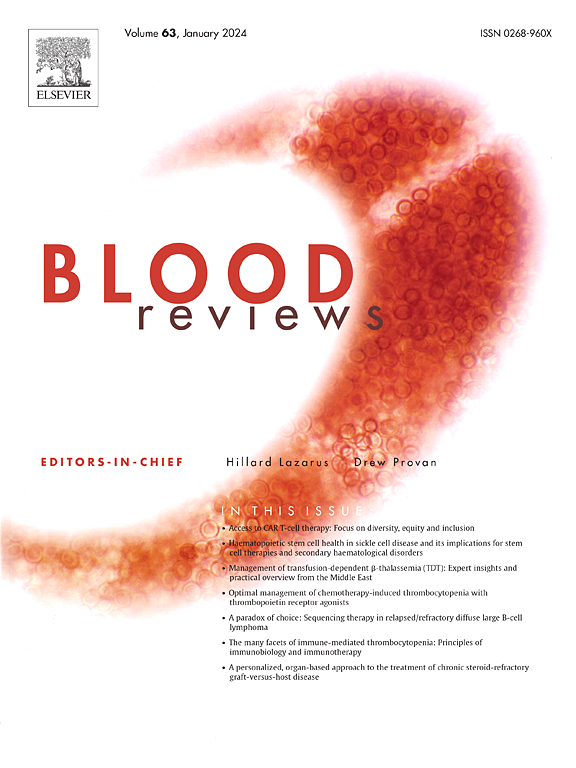恶性血液病放射免疫治疗的持续进展。
IF 5.7
2区 医学
Q1 HEMATOLOGY
引用次数: 0
摘要
放射免疫治疗(RIT)是将细胞毒性放射性核素与靶向肿瘤抗原的抗体(Ab)结合使用。与常规疗法相比,RIT提高了Ab的治疗效果,减轻了毒性。本文综合综述了RIT治疗血液系统恶性肿瘤的最新研究进展和未来前景。尽管靶向CD20的β颗粒RITs对复发/难治性惰性或转化性非霍奇金淋巴瘤患者有效且低毒,但由于新疗法的可用性不断增加,这些治疗尚未得到普及。使用单域抗体的RIT有望提高肿瘤外显率并减少对非靶器官的辐射暴露。为了提高RIT的疗效,α-颗粒RIT和预靶向放射免疫治疗(PRIT)正在研究中。α粒子RIT具有较高的线性能量传递和较短的粒子范围,具有较强的抗肿瘤活性和较低的旁观者效应。PRIT可增加肿瘤与全身的剂量比。本文章由计算机程序翻译,如有差异,请以英文原文为准。
Continuing progress in radioimmunotherapy for hematologic malignancies
Radioimmunotherapy (RIT) involves combining a cytotoxic radionuclide with an antibody (Ab) targeting a tumor antigen. Compared with conventional therapies, RIT improves the therapeutic efficacy of Ab and ameliorates toxicity. This comprehensive review describes the current advancements and future prospects in RIT for treating hematologic malignancies based on recent investigations. Although β-particle RITs targeting CD20 are effective with low toxicity in patients with relapsed/refractory indolent or transformed non-Hodgkin's lymphoma, these treatments have not gained popularity because of the increasing availability of new therapies. RIT using single-domain antibodies is expected to improve tumor penetrance and reduce radiation exposure to non-target organs. To enhance RIT efficacy, α-particle RIT and pretargeted radioimmunotherapy (PRIT) are currently being developed. Alpha-particle RIT demonstrates substantial antitumor activity and reduced bystander effects due to its high linear energy transfer and short particle range. PRIT may increase the tumor-to-whole body dose ratio.
求助全文
通过发布文献求助,成功后即可免费获取论文全文。
去求助
来源期刊

Blood Reviews
医学-血液学
CiteScore
13.80
自引率
1.40%
发文量
78
期刊介绍:
Blood Reviews, a highly regarded international journal, serves as a vital information hub, offering comprehensive evaluations of clinical practices and research insights from esteemed experts. Specially commissioned, peer-reviewed articles authored by leading researchers and practitioners ensure extensive global coverage across all sub-specialties of hematology.
 求助内容:
求助内容: 应助结果提醒方式:
应助结果提醒方式:


